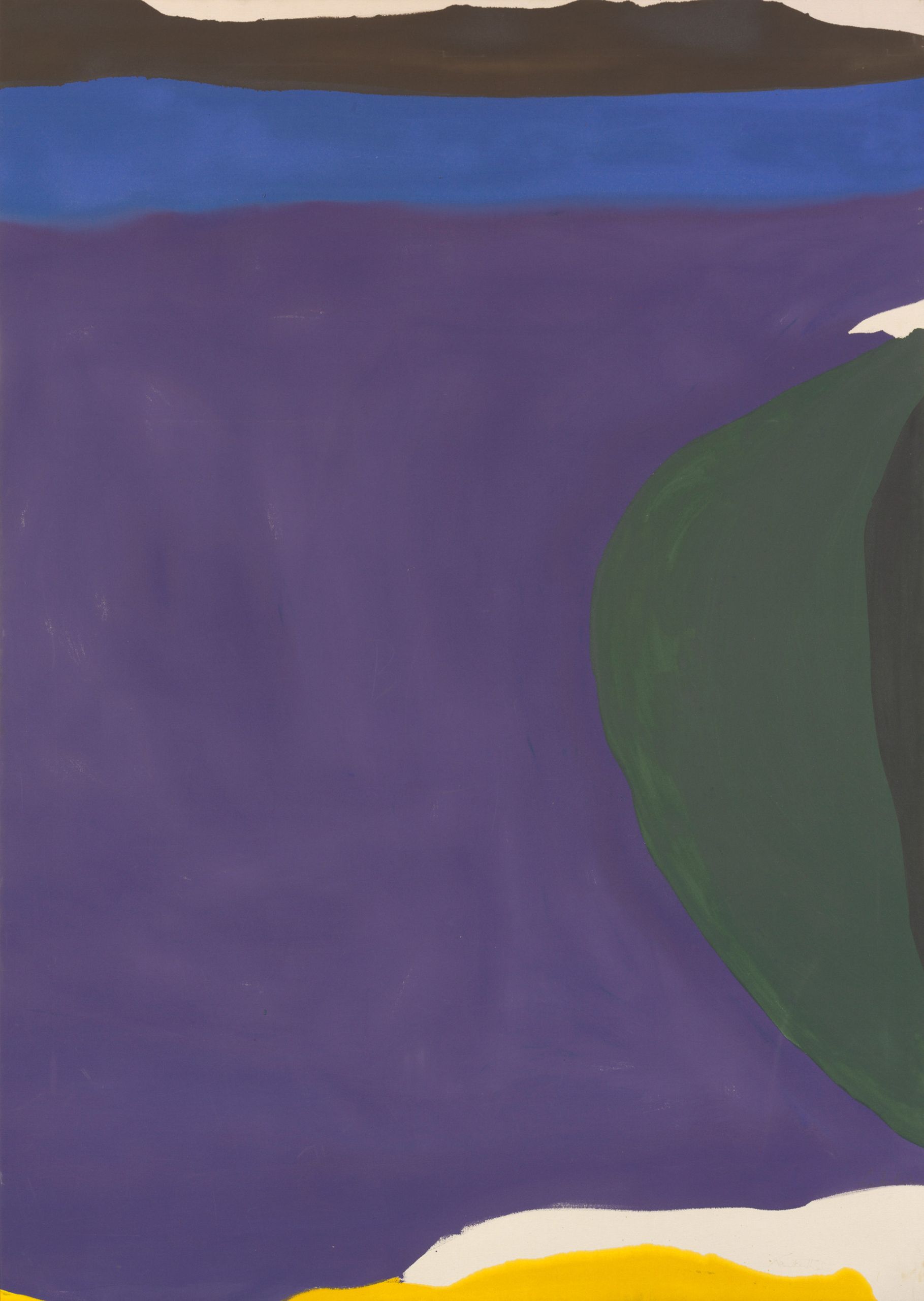Requiem
1992Acrylic on canvas179.1 x 243.8 cm
Helen Frankenthaler (b. 1928; d. 2011) is recognized as one of the great American artists of the 20th century. Her development from Abstract Expressionism to Color Field painting consistently challenged traditional conventions over the course of fifty years. Her innovative “soak-stain” technique, first deployed in 1952 with solvent-thinned oil paint, and then after 1962 with acrylic, reinvigorated abstract art, with pigments brushed, dripped, poured, sponged, and dragged across unprimed bolts of canvas laid out on the studio floor. Her command of color and space, coupled with a process that thrived on intuitive spontaneity, yielded a prolific stream of paintings on canvas and paper.
As a young painter living a bohemian life during the 1950s, Frankenthaler met kindred artists of the New York School—David Smith, Lee Krasner, Jackson Pollock, Willem and Elaine de Kooning, Franz Kline, Adolph Gottlieb, and Barnett Newman—through the American art critic Clement Greenberg. Her early encounter with Pollock’s work at Betty Parsons’s New York Gallery in 1951, and as a visitor to Pollock’s studio in Springs, East Hampton, on Long Island, had a major impact. Pollock’s black-and-white enamel paintings from this period inspired a full-bodied gestural abstraction full of signs and symbols. Following Pollock’s lead, Frankenthaler rolled out unsized, unprimed canvas, applied paint using various unorthodox methods, and then manipulated the medium with brushes, sponges, and fingers. Frankenthaler’s soak-stain technique continued to change as she changed. What remained constant was her belief that a successful abstract painting should achieve a dynamic sense of space.
A lot of Frankenthaler’s late work from the 1990s through the 2000s channels color into abstract atmospheric landscapes and seascapes. From 1974 to 1997, the artist lived and worked between New York City and Shippan Point in Stamford, Connecticut. Additionally, between 1990 and 1991, she taught a summer master’s class at the Santa Fe Art Institute in New Mexico. Away from the hustle and bustle of New York, close to Long Island Sound or the expansive terrain outside Santa Fe, she settled into her studio, drawing inspiration from her environment.
In Requiem (1992), whose title refers to the musical genre of the funeral mass, Frankenthaler conceived an abstract composition through the interplay of dense dark colors—burgundies, purples, browns, and blues—buoyed at the bottom by unbounded space. Death is evoked and at the same time elevated through stratified tiers of ascending paint. By 1992 the painter had begun to experiment with gel medium mixed with acrylic and manipulated with rakes, mason trowels, spatulas, sponges, and wooden spoons. The results are decidedly sculptural. The agitated surface of Requiem—tough, edgy, recalcitrant—raises existential questions about an artist’s late work.
Original title
Requiem
Date
1992
Medium/Materials
Acrylic on canvas
Dimensions
179.1 x 243.8 cm
Credit line
Guggenheim Bilbao Museoa

